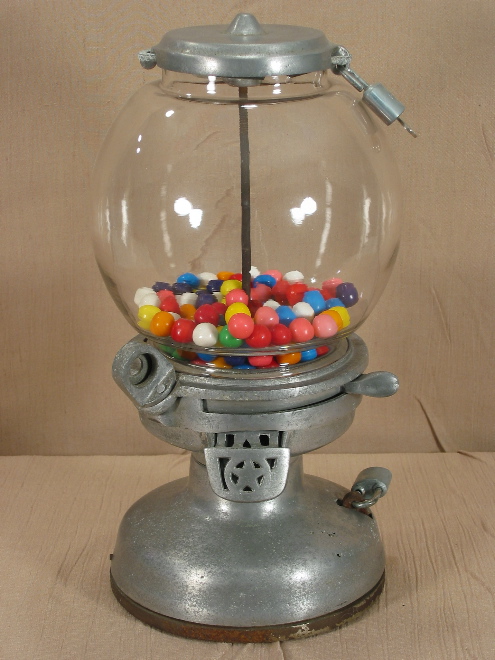___________________________________________________________________________________________
'Belgian Columbus'

___________________________________________________________________________________________

Maker unknown, c. 1920s or '30s, about 15" tall. The circa-ness is my estimate but you'll notice I'm giving myself a 20-year span to nail it. Yep, I'm really threading the needle there, aren't I? You have to admire my guts on that. If I had to narrow it down I'd say late '20s or early '30s---about the middle of my range---but that's just a gut impression; I couldn't defend it with any compelling factual evidence.
The height is also an estimate but it's a good one. As I update this page in November 2021 I discovered that I'd neglected to include the height in the description when I first wrote it, and I no longer own the machine to measure. I thought, hmmmmm, what machine's height could I compare it to and (by memory) finally honed in on the Columbus A3 as my reference. Could it be 1/2" taller or shorter? Sure, but 15" is pretty damn close if it's not exact.
Okay, enough of the waffling. The name 'Belgian Columbus' is commonly used to describe this model but it's colloquial. Most collectors believe this to be Belgian in origin, but disagree about whether it was made by Columbus for the European market or whether a Belgian manufacturer "borrowed" the design from Columbus. It's made of thick cast aluminum except for the baseplate, which is thick cast iron. The machine is heavily bottom-weighted (see what I did there?) and if that was the intent then they succeeded.
This machine gives one gumball for an American nickel. It was probably designed to vend with a 10 dgfg coin, which is the same size as a nickel. These machines are usually buffed to a glossy mirror-like finish, but I saved this one before it met such a depraved fate. The globe is similar to a Columbus #8 smooth globe, but flattens to a narrow ridge near the top and bottom. I've never seen one with an original decal, but that doesn't mean one doesn't exist.
This example is 100% original, although the Corbin locks may not be right. The imperfect casting of the gate always surprised me but I never doubted that the gate is original to the machine. I don't think Columbus would have let one out the door like that, which I consider evidence that it's not a Columbus machine made for the European market. This gate would have been easy to fix by removing the extra metal and nobody bothered doing that. That ambivalence doesn't strike me as Columbus-like in the least, and I have trouble believing they'd have given up all oversight on the model's production had they been associated with it.*
* But I could be wrong!
___________________________________________________________________________________________
___________________________________________________________________________________________
©Small Vintage Vending 2021